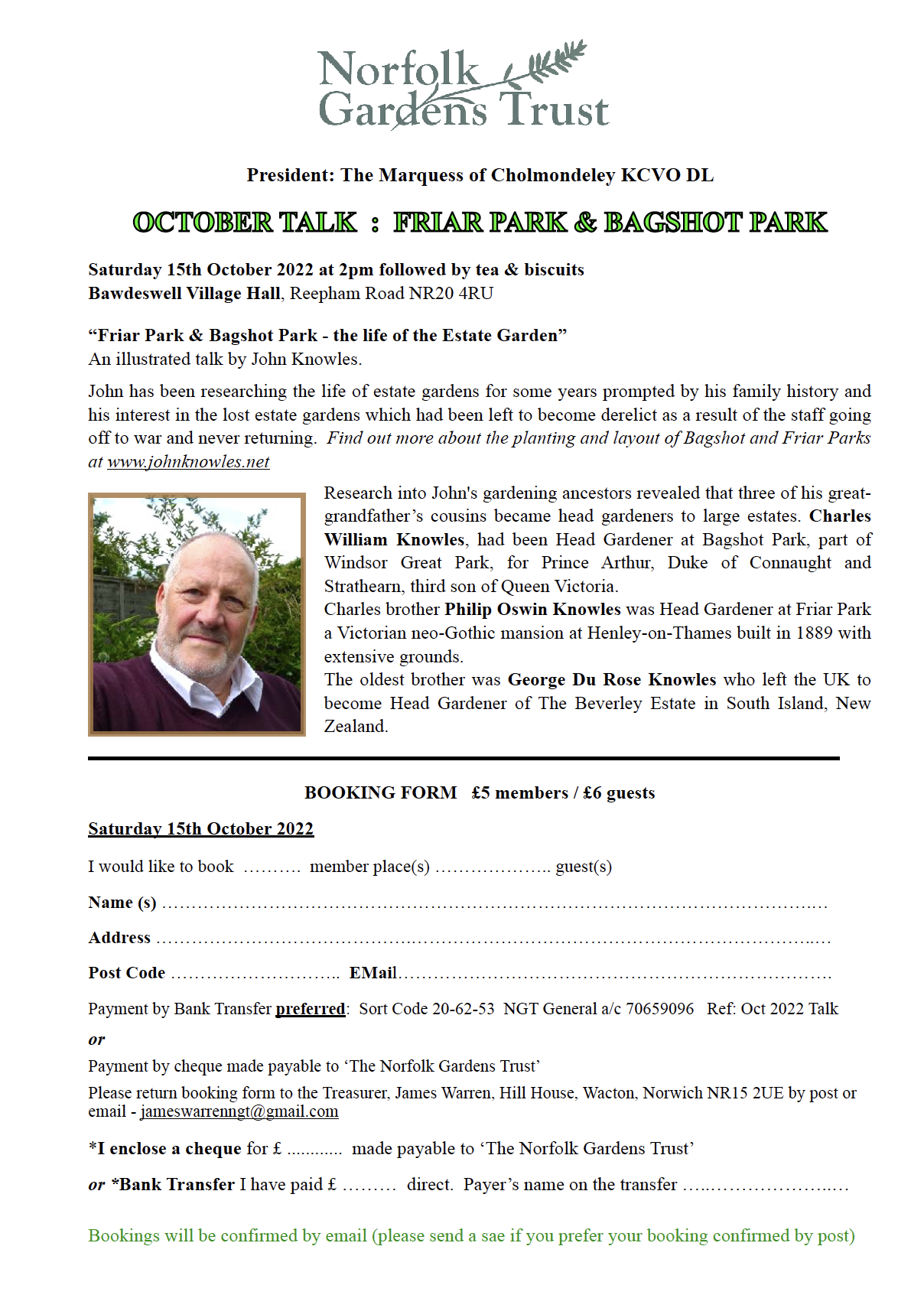John Knowles.net
GARDEN ROOTS
History of Estate Gardening BLOG
28.09.2022
The Human History of Estate Gardens - Part 1
It is arguable that gardens are contrived natural constructs designed to meet the emotional, social, dietary and general needs of humanity. When Estate Gardens reached their heights as statements of wealth, power and influence during the Victorian and Edwardian ages they confirmed, critically, one’s status in society.
Gardens as we would recognise them, have existed at least since Roman times. The ideal model in the medieval period was a fountain, a lawn, a herb garden and an orchard. The human need to impress plays a part in the theatre of all gardens. As the complexity of gardens grew so did the needs to manage them effectively. The love of gardens, their design in planting, the ‘set’ for the ‘play,’ was not confined to the owners but shared by designers and to differing extents to those who actually worked the land.
From the hunting lodges of the Stuarts and Elizabethans to the formal curtilage of their houses, the bucolic havens of the rich were designed to impress. This does not mean that well-heeled house and land owners were bereft of a love for the beauty of what was created, the formal partéres, chess and knot gardens and the parkland elements of breathtaking views and pleasure gardens in which to stroll - but the desire to ‘dress to impress’ was as strong for parks and gardens as for decor, dress and dinner.
In the 19th century an ideal weekend might be: Friday welcome hospitality; Saturday daytime shooting parties for the men (ladies taking lunch out to the men) ; Saturday evening amateur theatrics or fancy dress dinners and Sunday, breakfast followed by a tour of the pleasure grounds and gardens before lunch and coaches. All designed to confirm one’s status in society.
The kitchen garden, an essential in an age of limited food preservation, was an equal matter of pride. Fruits in season and out of season won plaudits as did exotics from the tropics with heated walls, beds and glass houses. The relationship between the head gardener and the cook/chef was vital with the the need to feed the family, their guests and so many staff all year round but the stakes were raised by continental influences and the desire to have a unique offering at the dining table.
The interaction of all of these different social groups was as much a reflection of society as in the towns and cities. The nature of landowners was of equal importance to a workforce as of owners of industry. The modern revival of interest in estate parks and gardens may ignore that for staff life was not always easy and a happy healthy life was heavily dependent on the goodwill of their masters.
Social order had an equal place amongst house and garden staff with large numbers of staff needing to be organised to manage the complex running of an estate. The nature of the Head Gardener, Butler and Cook would define the atmosphere below stairs and above the soil and critically the running of a successful estate.
Gardeners often started their careers at 13 or 14 as Garden Boys or ‘Pot Boys.’ Experience was gained during the early years of labouring through the apprenticeship skills of watching, learning, listening, reading and doing. They became Journeymen (name based on the French Journée meaning 'daily' and referred to paying a person for a day's work. A Journeyman could become a Master Gardener ( aterm not often used), an Assistant Head Gardener and a Head Gardener who was the master of the garden and responsible to the Landowner for the development and management of the park and garden.
